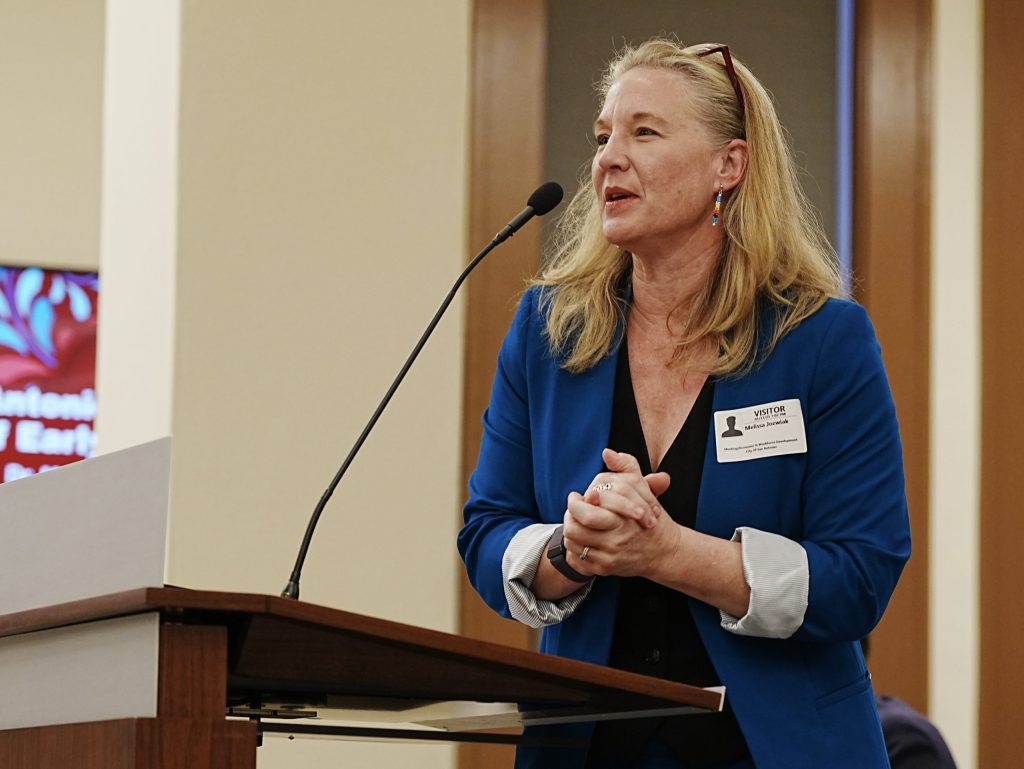San Antonio’s child care providers were licensed for 30% more slots than were actually available last year, according to a study commissioned by the City of San Antonio and conducted by Texas A&M University-San Antonio.
That means there are 20,000 fewer child care slots in San Antonio than would be suggested by the total licensing number, according to the study, which includes data from 54 zip codes and all 10 city council districts across San Antonio.
Researchers examined Bexar County’s child care landscape under a microscope and gathered data that validated the issues families and child care centers have faced in recent years, which was released Friday and presented to the Economic and Workforce Development Committee.
Sponsored by Ready to Work, the city’s Economic Development and Human Services departments and Pre-K 4 SA, the study was commissioned to clarify the issue for officials who play a role in ensuring San Antonians have accessible pathways to well-paying jobs.

Researchers sent voluntary surveys to all Bexar County Texas Health and Human Services childcare providers, the Texas Education Agency, Head Start programs and Department of Defense child development centers and hosted focus groups with parents, advocates and centers that serve children under 5 to examine quality, access, and affordability.
Right now in Bexar County, 250 centers — 30% of the estimated more than 750 centers in San Antonio — participate in the Texas Rising Star program, a voluntary quality rating system that ensures centers meet higher quality standards than others.
A majority are at the highest level of quality, but of those, 70% do not participate in the child care subsidy system, which covers child care costs for low-income families.
Even fewer of those slots are for infants — less than 2% of available slots designated for infants and toddlers are considered high-quality — meaning the city’s lowest income families are left with the fewest options for high-quality child care. Transportation support and overnight care are even more rare, according to the data.
Advocates want to make sure at least 50% of TRS centers are at the highest quality, said Sarah Baray, CEO of Pre-K 4 SA. The number could improve within the next year, as United Way of San Antonio and Bexar County helps enroll more centers into the TRS program, she added.
The study found that with more staff, more centers could improve the quality of care.
“When you look at that data and see that a majority of people working with our infants— our children who are having the biggest boom in terms of brain development— They have the least training,” said Melissa M. Jozwiak, the study’s lead researcher and an early childhood professor at TAMU.
TAMU-SA will break ground on Educare San Antonio, a new 25,000-square-foot early childhood education facility that will serve around 200 children on the South Side in February. Pre-K 4 SA’s new learning center will open by the 2025-26 school year, adding 350 more early education spots.
Preschool teachers who work in school districts have bachelor’s and masters’ degrees, but it’s a “flipped” scenario for infants and toddlers, whose child care workers make the lowest salaries, she said.
“Community colleges and the universities have to align,” Jozwiak said, “So we can take those CDAs (Child Development Associates) we can turn them into associate degrees and into bachelor degrees.”
“We’re down to 211 [infant and toddler] openings for all of Bexar County,” she said. “And you think about how many babies were born last year? That’s really troubling.”







